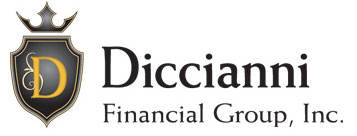In our basics of investing series, we have discussed to date: the fundamentals of investing, U.S. Government securities, savings bonds, T-bills and notes. We have also covered the value money market accounts; bond funds, high quality corporate bonds, municipal bonds and balanced stock funds have in an investment portfolio. We are now ready to discuss the intermediate and higher risk investment categories and the role these assets play in your portfolio.
Growth Stock and Stock Funds
Growth Stocks and Growth Stock Mutual Funds are shares in companies that are the leaders in their industries and have demonstrated time and time again growth rates in excess of 10%. These companies normally pay low dividends, which are cash payments declared and paid quarterly by corporations to stockholders. Growth Stock companies also offer opportunity to profit from rising stock prices and produce excellent returns well above the inflationary rate. (Note: the average inflation rate is 5.0%).
Large Capitalization Stocks and Mutual Funds
Large capitalization refers to companies in which a lot of money has already been invested and which have a high market value. Large “Cap” companies generally have a market value in excess of $5 billion dollars and a larger share of that market allowing them to influence their markets. Market value is calculated by multiplying the number of common stock shares owned by stockholders times the current price per share. For example, a company with 100,000,000 shares outstanding at $60.00 per share has a market value of $6 billion dollars.
Medium Capitalization (Mid “Cap”) Stocks and Mutual Funds
Stocks with market capitalizations that range from $1-$5 billion are considered Mid “Cap” stocks. These smaller companies generally have high growth rates in revenues and earnings. They tend to perform well when the stock markets are recovering from a down turn.
Small Capitalization (Small “Cap”) Stocks and Mutual Funds
The Small “Cap” companies have a capitalization of $1 billion dollars. These companies generally have short track records and represent high risk yet a relatively high potential return. Small “Cap” companies perform overall very well in the market and every portfolio should have a representative portion in this sector. When the stock market is in a recovery mode the Small “Cap” sector is usually a strong performer in the initial phases of recovery because it has so much upside potential. Small “Cap” companies can be good long-term investments because all companies start off as smaller companies.
Industry Specific or Sector Specific Mutual Funds
Industry specific funds invest in many companies of a specific industry. You can buy funds that specialize in healthcare, technology, Internet or financial services. These funds are similar to a wild roller coaster ride in that they climb slowly and steadily to the top then wildly drop to the bottom. Use caution as to the percentage of sector specific funds you use in your asset allocation. Many financial planners do not advocate using these funds in an investment portfolio that is closer to retirement.
High Risk Stocks or High Risk Mutual Funds
This category represents the largest risk category that we have discussed so far. These companies have smaller revenues and earnings bases and have performed erratically in the past. These companies tend not to be leaders in their industries, concentrate on one product or service and have stock prices less than $5.00 per share. Often the management is not the best and the stock tends to be overpriced based on corporate earnings.
Non-Investment Grade Bonds-Junk Bonds
Because of the fact that these are non-investment grade bonds, there is a higher likelihood that they could default and not pay the interest due and/or the face value of the bond at maturity. On the other hand, there are some excellent companies included in this group, and their bonds may very well be upgraded because of improvements in corporate operations.
Collectibles
The final category in this section includes items that are often overlooked. Collectibles include coins, artwork, historical memorabilia, china, crystal, baseball cards and other items that appreciate in value over time. Collectors need a good knowledge base of the market for the items they are collecting and they must take appropriate actions to protect the items.
In Summary
Knowing which investments to use and when is key in any successful financial plan. This starts with a good understanding of your ability to handle risk and the comfort level that you are willing to live with. The intermediate and high-risk categories are not for everyone. Contact us to consult a financial advisor to achieve the best outcome.

